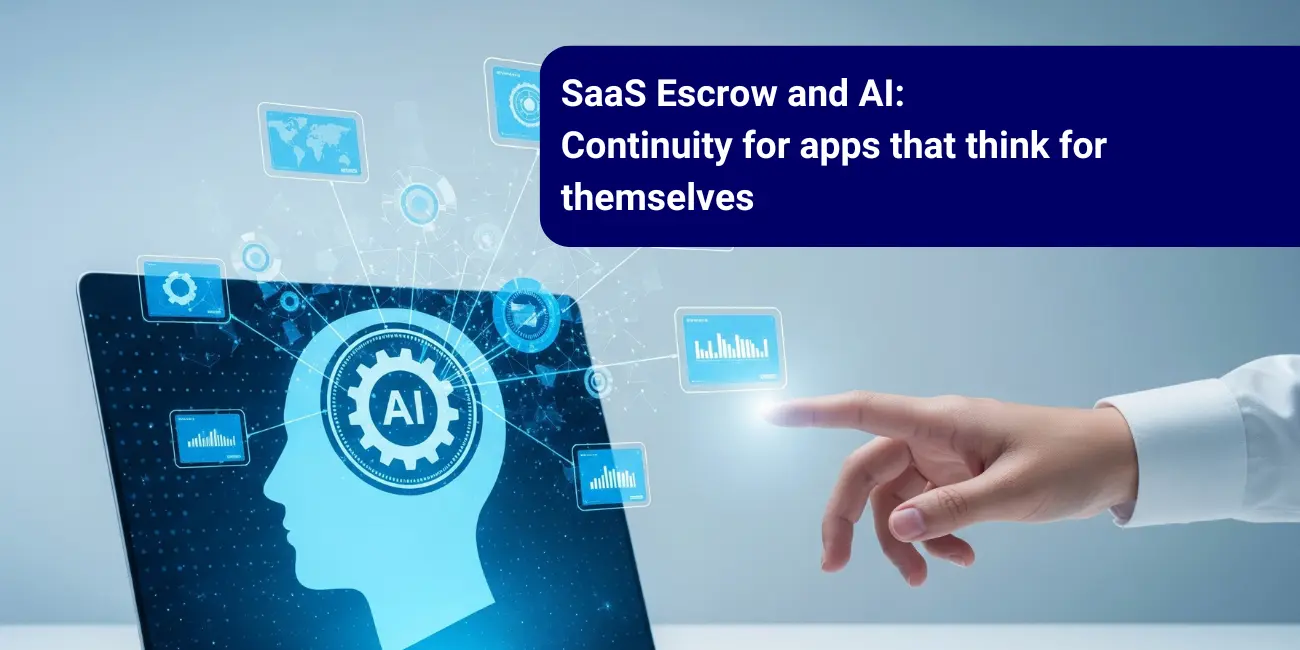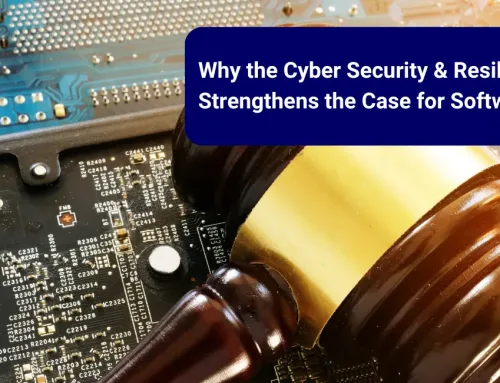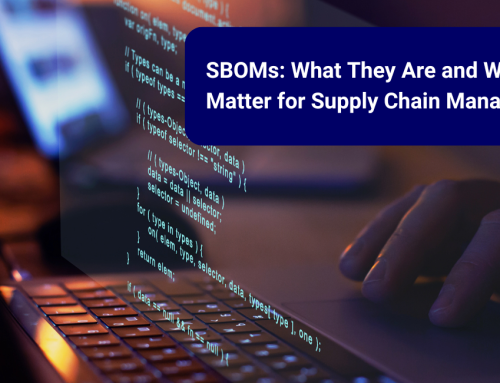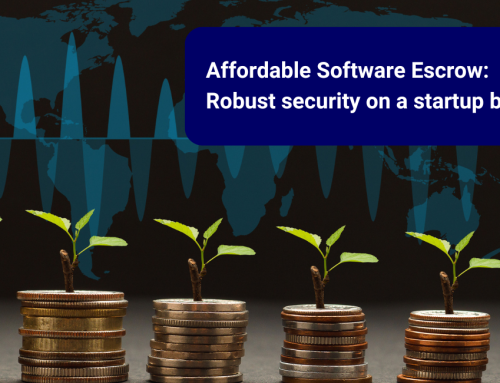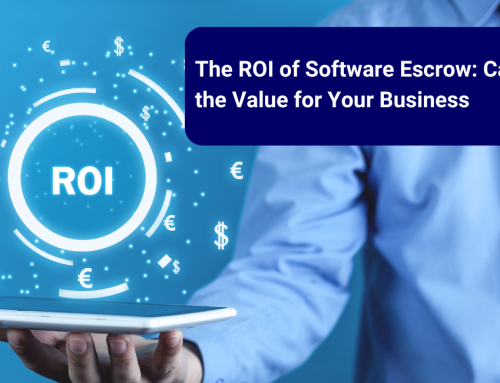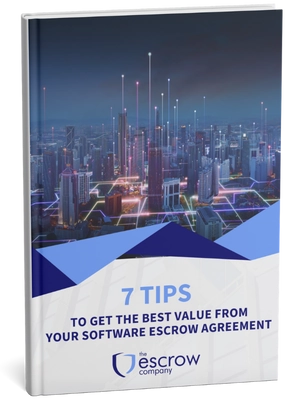SaaS Escrow and AI – Continuity for apps that think for themselves
As artificial intelligence (AI) becomes embedded across industries, it introduces new layers of complexity for resilience planning and continuity assurance. Traditional Software escrow and SaaS escrow helps ensure that if a vendor fails, clients can still access the source code, deployment materials, and hosting configurations needed to keep systems running.
But when the software in question is an AI application, there’s more to consider than code. AI systems rely on models, data, and training environments – all of which can be dynamic, interdependent, and subject to uncertain ownership or licensing rules.
How SaaS Escrow Works – and Where AI Changes the Picture
In a typical SaaS escrow arrangement, a trusted third party securely holds the essential materials required to rebuild, maintain or replicate a hosted application if the supplier becomes unavailable.
This can include:
- Source code
- Deployment scripts (Infrastructure as Code) such as Terraform or CloudFormation
- Containers
- Virtual Machine images
- Database backups
- Credentials to the production cloud environment
For AI systems, the same principles apply – but the contents and contractual scope of the SaaS escrow must expand to cover the components that make the model usable and reproducible.
What Should SaaS Escrow for an AI Application Include?
The Software Layer (Codebase)
Core scripts, frameworks, APIs, and orchestration logic that run the AI lifecycle, from collecting and processing data to delivering outcomes.
These materials are escrowed in much the same way as conventional SaaS applications.
The Model (Trained Version of the AI System)
The trained model is what gives an AI application its “intelligence.” It’s the result of the system learning from data over time. Without access to this trained version, even a full copy of the source code won’t recreate the same behaviour.
For that reason, the software escrow deposit should include the most recent verified model files along with a short explanation of how they were produced and trained.
The Data (Training and Test Sets)
The data used to train and test an AI model is often the most sensitive part of the system. It may be protected by copyright, privacy laws, or commercial agreements.
If sharing the actual data isn’t legally or commercially possible, vendors can still support continuity by depositing:
- Synthetic or anonymised datasets that mimic the structure of the original data; or
- Clear documentation describing how the data was sourced or how the model can be retrained using publicly available datasets.
This ensures the beneficiary can still understand or, if necessary, recreate how the AI works without breaching confidentiality.
The Environment (How It’s Deployed and Runs)
AI applications rely on specific tools, libraries, and hardware settings to function correctly, often including GPUs and specialist frameworks such as TensorFlow or PyTorch.
A complete software escrow deposit should therefore include the configuration files or container images that describe how the system is set up.
This allows the AI environment to be recreated quickly if needed and in another location if the original service becomes unavailable.
Utilising existing components or supporting infrastructure
As with SaaS escrow, sometimes continuing to operate existing cloud environments in the event of supplier failure can be a good fit for AI model components too, providing these are dedicated resources. So credentials to a system or components, running and hosted in AWS, Azure or GCP for example, can also be deposited into escrow and provided to the beneficiary party.
Ownership and the Legal Grey Zone
Unlike traditional software, AI systems blur the boundaries of ownership.
- Source code is usually protected by copyright and can clearly be owned.
- Training data may have multiple owners or data subjects, complicating its transfer or use.
- Trained models – the mathematical artefacts produced through training — occupy a grey area: they may be considered derivative works of the data or standalone creations, depending on jurisdiction.
How Laws Differ Globally
- United States: United States: Under recent U.S. Copyright Office guidance (2025) and the Thaler v. Perlmutter ruling, works created entirely by AI without human authorship cannot be copyrighted. However, outputs shaped or meaningfully edited by humans may qualify for protection. In practice, ownership of AI models and outputs in the U.S. is therefore governed mainly by contractual terms and data-use rights, rather than automatic copyright.
- European Union: The EU AI Act (2024) and existing IP law recognise copyright only for works involving human creativity. However, trained models and datasets can be contractually owned and licensed.
- United Kingdom: UK law still recognises “computer-generated works” under the Copyright, Designs and Patents Act 1988, assigning authorship to the person who made the necessary arrangements for the work’s creation. However, where AI operates without meaningful human input, copyright protection is uncertain. In most cases, ownership of AI models and outputs in the UK is determined by contractual terms and data-use rights, rather than clear statutory copyright.
- Australia & Canada: Both jurisdictions require human authorship for copyright but recognise trade-secret and contractual protection for AI systems and models.
These frameworks mean that software escrow must rely on contractual rights, not assumptions of copyright ownership.
Trade Secrets and Escrow: A Practical Middle Ground
When ownership is uncertain, treating parts of an AI system as trade secrets offers a pragmatic solution.
A trade secret is information that:
- is commercially valuable because it is not generally known, and
- is subject to reasonable steps to keep it secret
This can include:
- Model architecture or feature-engineering logic
- Training parameters and hyper-parameters
- Pre-processing or data-curation methods
- Proprietary training datasets
Disclosing trade-secret information to a neutral software escrow agent does not void its protection, provided:
- the software escrow agent is bound by strict confidentiality, and
- release conditions limit disclosure only to authorised beneficiaries and include ongoing NDA or equivalent obligations.
This approach is recognised under:
- In Australia, while there is no dedicated “trade secrets statute,” the general law of confidential information and contractual/nondisclosure protections apply.
By treating the model, its weights, or the data-engineering methods as trade secrets, AI vendors can deposit into a software escrow the critical operational knowledge required for continuity – without conceding ownership or risking public disclosure of proprietary know-how
Why AI Vendors and Enterprises Should Act Now
As AI systems underpin critical services – from underwriting and fraud detection to healthcare diagnostics – regulators are tightening expectations around operational resilience and explainability.
For enterprises relying on third-party AI, software or SaaS escrow provides a tangible assurance:
- That essential code, models, and environments can be recovered if the vendor fails; and
- That the process meets regional data and IP-governance requirements.
For AI vendors, verified SaaS escrow demonstrates transparency and enterprise readiness — strengthening trust in sales cycles subject to DORA, PRA SS2/21, APRA CPS 230, or similar frameworks.
In Conclusion
AI has changed the nature of software resilience. Continuity now depends on access not only to code, but to the intelligence and data behind it.
A modern software escrow solution for AI applications addresses that challenge by securing the model, data, and environment within a legally and technically controlled framework. It doesn’t claim ownership – it ensures continuity, compliance, and confidence in the systems that increasingly shape business decisions.
Contact us to start your AI Software Escrow journey today,

